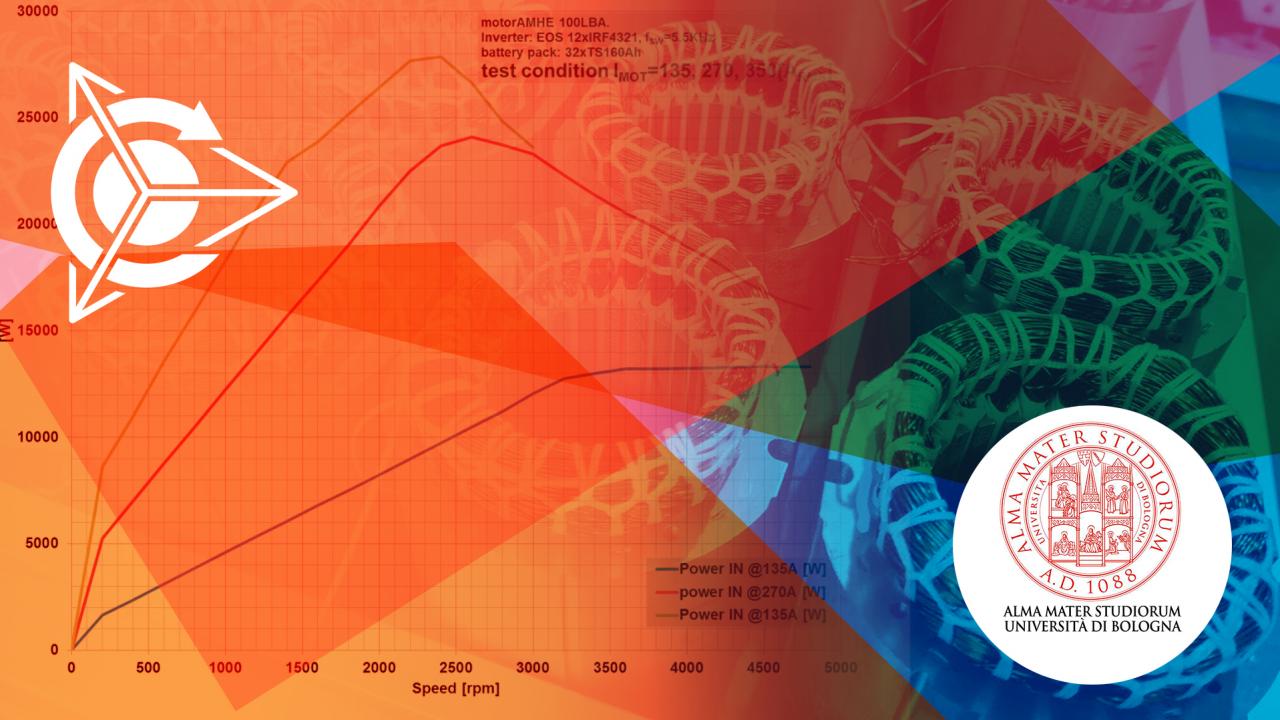
Testing "Slavyanka" motors at the University of Bologna
Victor Arestov held over ten various tests with the modified motors from 2013 at the universities (and with the participation of the universities) of Germany and Italy as well as at various enterprises and manufacturer plants. The tests were held in China too.
For most of the tests the non-disclosure agreements have been signed, but some of them are available for publication.
The test at the University of Bologna (Italy) was aimed at comparing the motors for TGS electric buggy and motor with "Slavyanka".
The motor provided by the customer had been developed under the supervision of Claudio Rossi for three years especially for Fiat, for using in electric drives. The motor was 54 kg, 104 V, 350 A with a copper rotor, size 132 (comparable with the industrial 7.5 kW motor).
As a comparison we took a small AEG 100L motor with 27 kg weight, with the rotor smaller in size than the Italian one (size 100 on the industrial scale), rewound to "Slavyanka".
The graphs with the results of testing the original motor as well as comparative graphs of the tests of the modified AEG motor of size 100 and the University motor with the copper rotor can be found here - https://drive.google.com/open?id=1FdYjwttCnmAbQOHp8B7BMcBo2tIUYIeU
The "Slavyanka" modified 3kW industrial motor (with aluminium industrial rotor and stator, without cooling) had 11 kW nominal power and 19 kW maximum power and demonstrated 88 %, but in the comparative testing underperformed by 1 kW as compared with the original. Besides, it didn't reach 130 Nm giving the stable figure of 104 Nm. But at the inrush current the modified motor outperformed the Bologna motor.
It's important to remember that for the comparative testing we had chosen a 3kW industrial and quite cheap motor modified to "Slavyanka" that in fact reached the performance figures of the original motor that is a result of a 3-year-long development, with the weight twice less than the original.
If a more powerful motor (for instance, with 4 kW power) had been chosen and modified for the testing, the results would have been more effective for a non-professional. But for the specialists it's clear that the testing results are more than representative in proving "Slavyanka" efficiency.
The link to the description of the research at the University of Bologna on the forum “Electrotransport.ru» in Russian - https://electrotransport.ru/ussr/index.php?topic=43516.msg1057279#msg1057279

